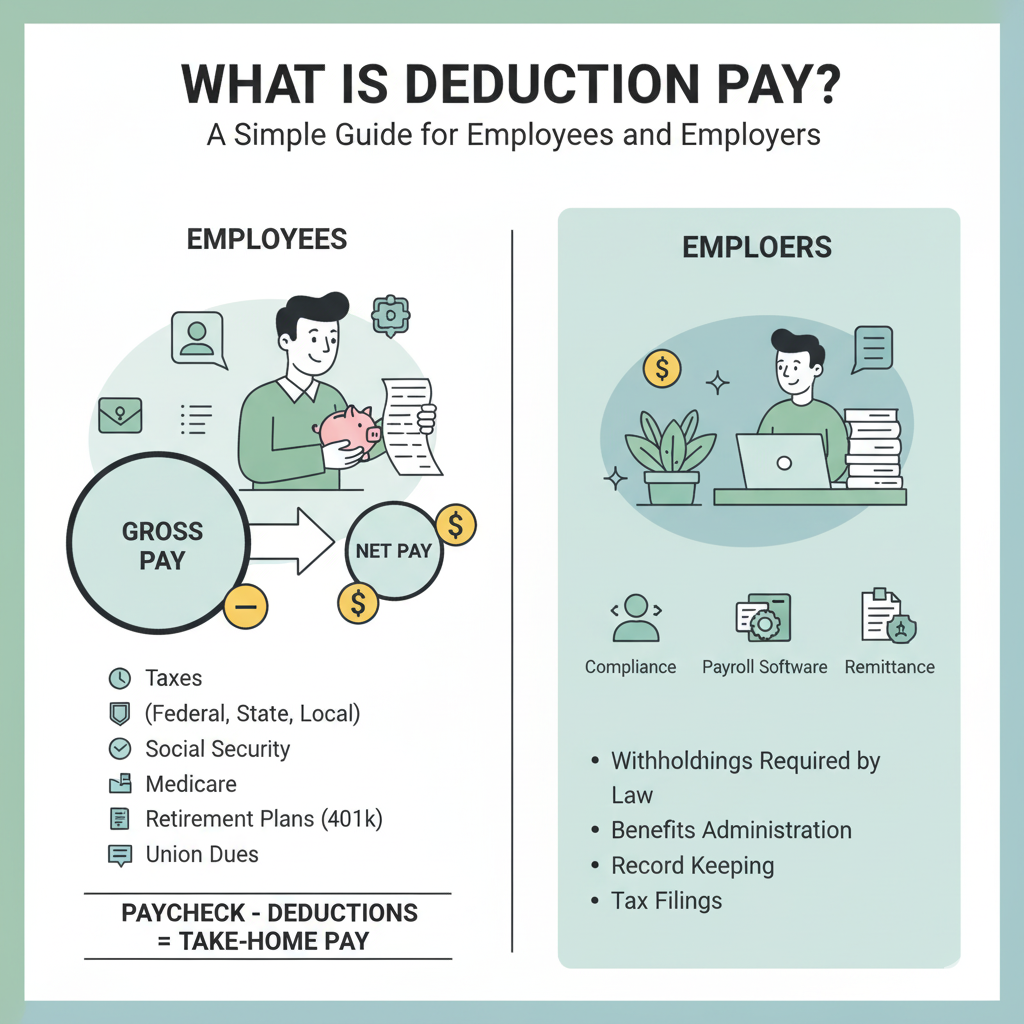If you’ve ever received your payslip and wondered why the amount you take home is lower than your gross salary, you’re not alone. This difference is due to deduction pay. Understanding what gets deducted — and why — is essential for both employees (to know their rights) and employers (to ensure compliance and transparency).
In this guide, we’ll break down what deduction pay means, the common types of deductions, and how both sides can manage payroll effectively.
What Is Deduction Pay?
Deduction pay refers to the portion of an employee’s salary that is withheld by the employer to cover required or authorized expenses. These deductions reduce the gross salary to arrive at the net pay — the actual amount that goes into the employee’s bank account.
Types of Payroll Deductions
Statutory Deductions (Mandatory by Law)
Employers are legally required to deduct and remit these payments to government agencies:
- Taxes (e.g., Income Tax / Withholding Tax)
- Social Security Contributions (e.g., SSS, Social Security, or equivalent depending on country)
- Health Insurance Premiums (e.g., PhilHealth, Medicare)
- Housing or Provident Fund Contributions (e.g., Pag-IBIG in the Philippines, EPF in other countries)
These ensure employees are covered by social benefits and comply with government tax laws.
Voluntary Deductions
These are deductions that employees agree to in writing:
- Retirement or pension fund contributions (401k, provident funds)
- Health insurance upgrades or life insurance plans
- Union dues or membership fees
- Salary loans or company advances
- Charitable contributions
Other Authorized Deductions
Employers may deduct certain amounts if permitted by law or contract:
- Absences, tardiness, or unpaid leaves
- Salary advances or overpayments
- Company property damage (with employee consent)
⚠️ Employers must ensure deductions are legal, authorized, and transparent to avoid labor disputes.
Why Deduction Pay Matters
For Employees
- Helps understand why take-home pay is lower than gross salary.
- Builds awareness of contributions that benefit them long-term (e.g., pensions, health coverage).
- Encourages financial planning by calculating net pay accurately.
For Employers
- Ensures compliance with tax and labor laws.
- Promotes transparency and trust with employees.
- Protects the business from legal penalties.
How to Calculate Net Pay After Deductions
- Start with Gross Salary (the total before deductions).
- Subtract Mandatory Deductions (tax, SSS, PhilHealth, Pag-IBIG, etc.).
- Subtract Voluntary Deductions (loans, insurance, etc.).
- The result = Net Pay (Take-Home Salary).
👉 Example:
Gross Salary = ₱30,000
Taxes & Contributions = ₱6,500
Loan Repayment = ₱2,000
Net Pay = ₱21,500
Best Practices for Employers
- Provide a clear payslip breakdown of all deductions.
- Secure written consent for voluntary deductions.
- Stay updated on labor laws to avoid unauthorized deductions.
- Use reliable payroll software to automate compliance.
Conclusion
Deduction pay is a normal part of every payroll system, but both employees and employers must understand it clearly. Employees should know where their money is going, while employers must ensure deductions are fair, legal, and transparent.
When handled properly, deduction pay builds trust, compliance, and financial security for everyone involved.

